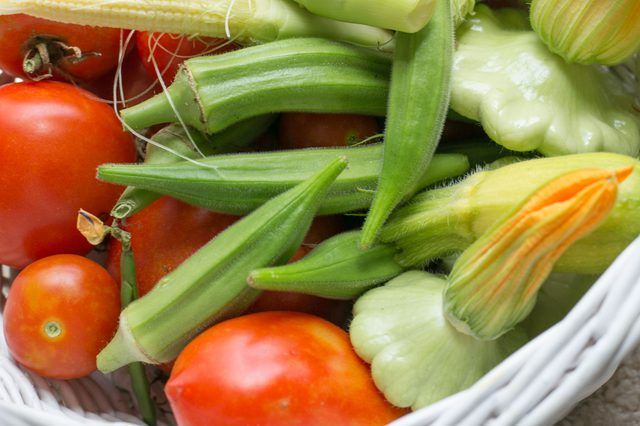Bulbs
Flower Basics
Flower Beds & Specialty Gardens
Flower Garden
Garden Furniture
Garden Gnomes
Garden Seeds
Garden Sheds
Garden Statues
Garden Tools & Supplies
Gardening Basics
Green & Organic
Groundcovers & Vines
Growing Annuals
Growing Basil
Growing Beans
Growing Berries
Growing Blueberries
Growing Cactus
Growing Corn
Growing Cotton
Growing Edibles
Growing Flowers
Growing Garlic
Growing Grapes
Growing Grass
Growing Herbs
Growing Jasmine
Growing Mint
Growing Mushrooms
Orchids
Growing Peanuts
Growing Perennials
Growing Plants
Growing Rosemary
Growing Roses
Growing Strawberries
Growing Sunflowers
Growing Thyme
Growing Tomatoes
Growing Tulips
Growing Vegetables
Herb Basics
Herb Garden
Indoor Growing
Landscaping Basics
Landscaping Patios
Landscaping Plants
Landscaping Shrubs
Landscaping Trees
Landscaping Walks & Pathways
Lawn Basics
Lawn Maintenance
Lawn Mowers
Lawn Ornaments
Lawn Planting
Lawn Tools
Outdoor Growing
Overall Landscape Planning
Pests, Weeds & Problems
Plant Basics
Rock Garden
Rose Garden
Shrubs
Soil
Specialty Gardens
Trees
Vegetable Garden
Yard Maintenance
How to Plant and Grow Okra
How to Plant and Grow Okra. Okra (Abelmoschus esculentus) requires 90 days to reach harvest after seeds are planted. It grows during the frost-free summer months, when soil and air temperatures are a minimum of 75 degrees Fahrenheit. It's typically planted outdoors about two weeks after all frost danger has passed. The large, edible pods form...
Okra (Abelmoschus esculentus) requires 90 days to reach harvest after seeds are planted. It grows during the frost-free summer months, when soil and air temperatures are a minimum of 75 degrees Fahrenheit. It's typically planted outdoors about two weeks after all frost danger has passed. The large, edible pods form until fall frost, providing an ongoing harvest of tender pods. The flowers provide an ornamental touch to the vegetable bed.
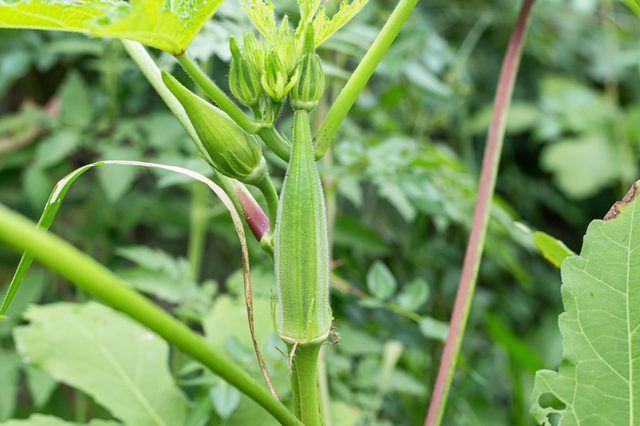
Things You'll Need
Hoe or power tiller
Tape measure
Manure-based compost or granular fertilizer, 10-10-10 or other balanced blend
Rake
Bowl
Watering device
Straw mulch
21-0-0 fertilizer
Eye protection
Waterproof gloves
Disposable tablespoon
Insecticidal soap
1-quart container
Spray bottle
Knife
Step 1
Break up the top 6 to 12 inches of soil in a well-drained garden bed that receives full sunlight. Use a hoe or power tiller. Spread either a 1-inch-deep layer of manure-based compost or 1 pound of a granular fertilizer that is balanced, such as 10-10-10, on every 50 square feet of soil surface. Till the compost or fertilizer into the loosened soil, and rake the soil surface to make it smooth.
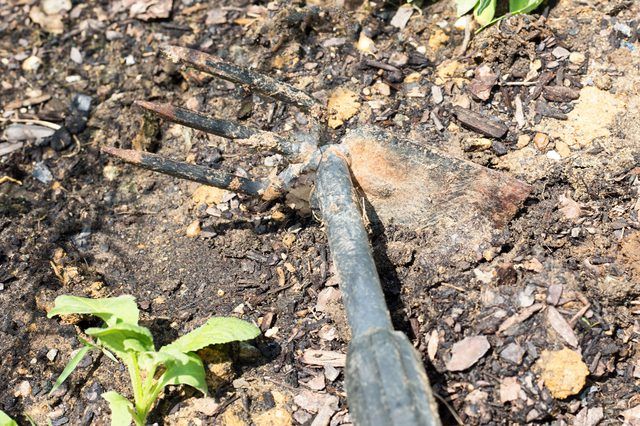
Step 2
Soak okra seeds in a bowl of warm water overnight before the day you want to plant them. Soaking helps soften the seed coats so the seeds germinate more readily after they are planted.
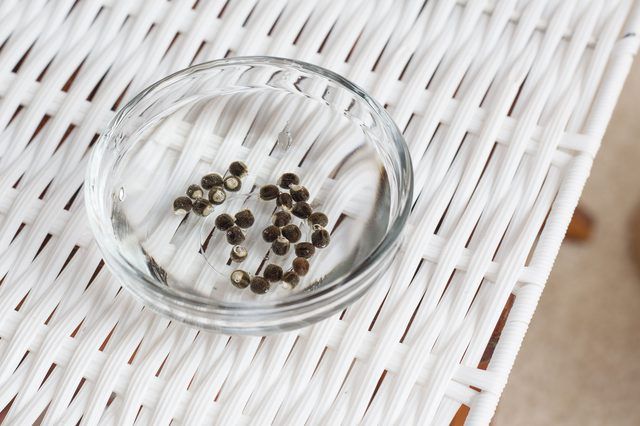
Step 3
Sow the okra seeds 1 inch deep in the soil. Space the seeds 2 inches apart in rows set 3 feet apart. Mist the soil gently with water so its top 6 inches is moist, and avoid washing the seeds out of the soil. Water the soil as needed to maintain moderate moisture in its top 6 inches until the seeds germinate, or sprout.
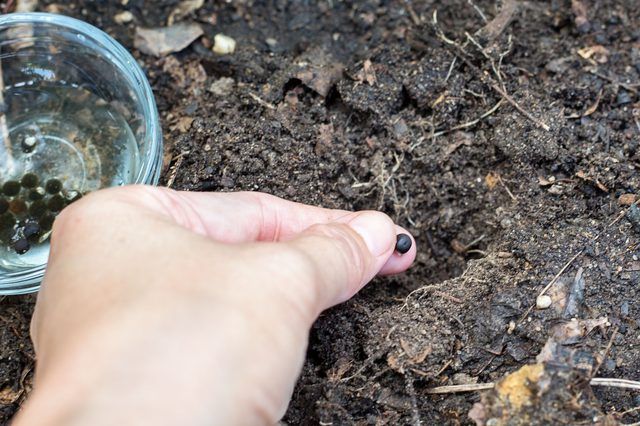
Step 4
Thin the seedlings by removing some of them after they produce their second set of leaves. The remaining seedlings should stand about 18 inches apart within each row.
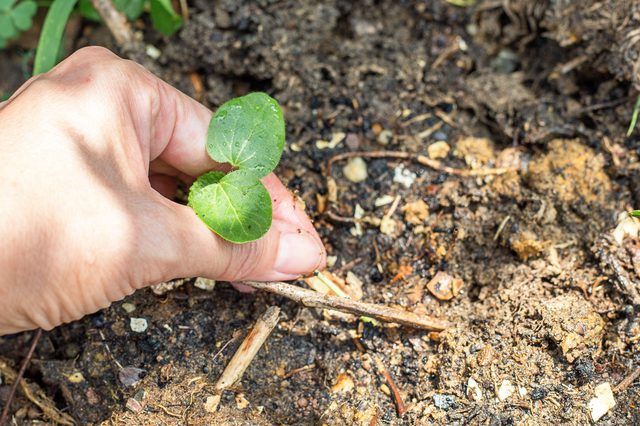
Step 5
Water the okra plants' soil deeply every seven to 10 days, soaking it to a 6- to 8-inch depth. Spread a 2-inch-thick layer of straw mulch over the garden bed, but arrange the mulch so it doesn't rest against the plant stems. Mulch helps conserve soil moisture,
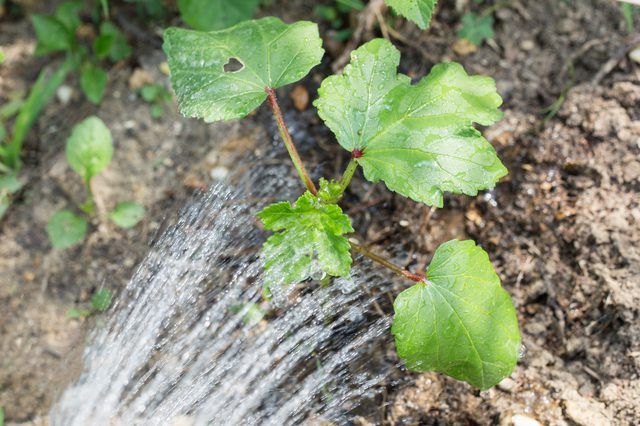
Step 6
Sprinkle 1/8 pound of 21-0-0 fertilizer over every 50 square feet of okra bed when the okra plants begin to produce pods. Apply the fertilizer in a band down each row, about 6 inches from the bases of the plants. Water the fertilized soil.
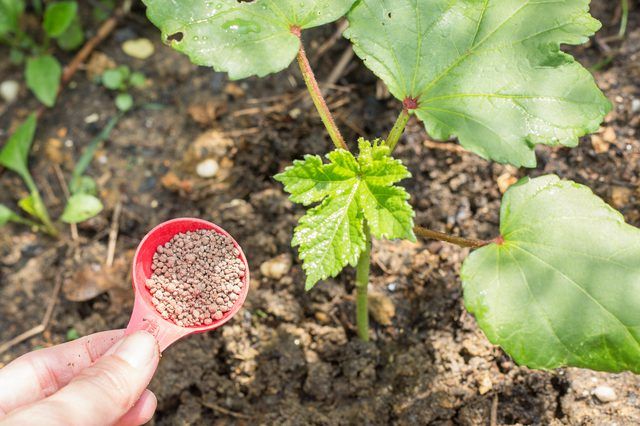
Step 7
Pull weeds that grow between the plants and in the rows before they become established. Mulch helps minimize weeds, but some weeds may invade the bed. Okra competes poorly with other plants.
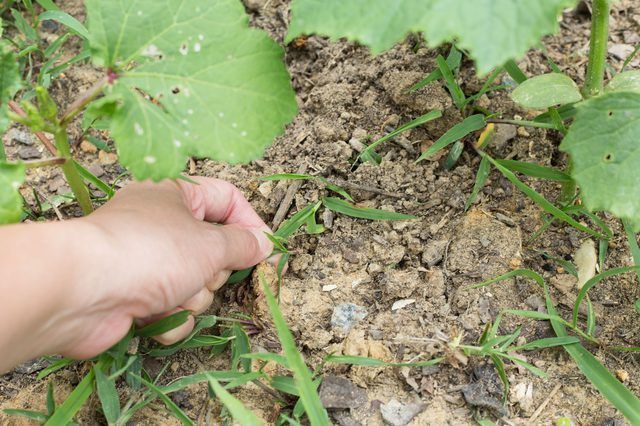
Step 8
Check the okra plants, especially the underside of their leaves, for aphids. They are pear-shaped, soft-bodied insects that feed on okra leaf sap. Mix 1 tablespoon of insecticidal soap with 1 quart of water in a spray bottle, and thoroughly douse the aphid-affected plants with the mixture to destroy the pests. Reapply the insecticidal soap at five-day intervals if necessary. Wear eye protection and waterproof gloves when handling an insecticidal soap or spray.
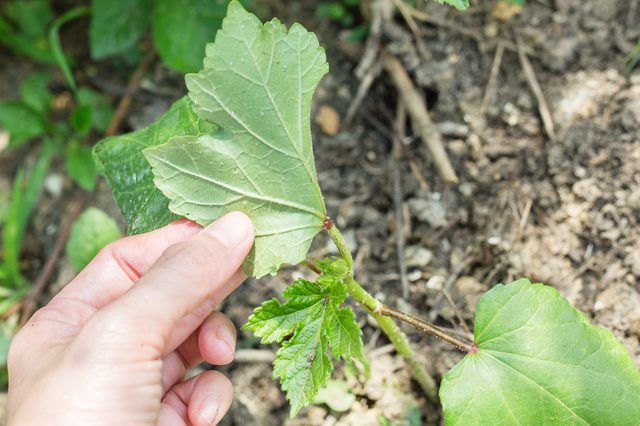
Step 9
Harvest the okra pods when they reach a 3- to 5-inch length but are still tender and green. Cut each pod from its plant, leaving a ?-inch stem attached to the pod. The plants may require daily harvesting at the height of summer production.
